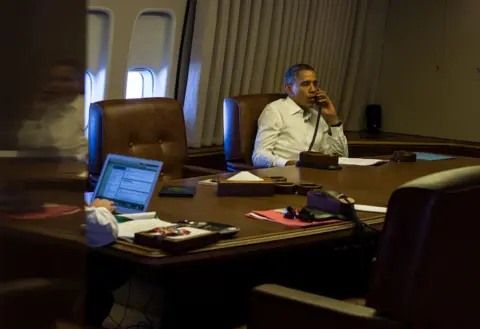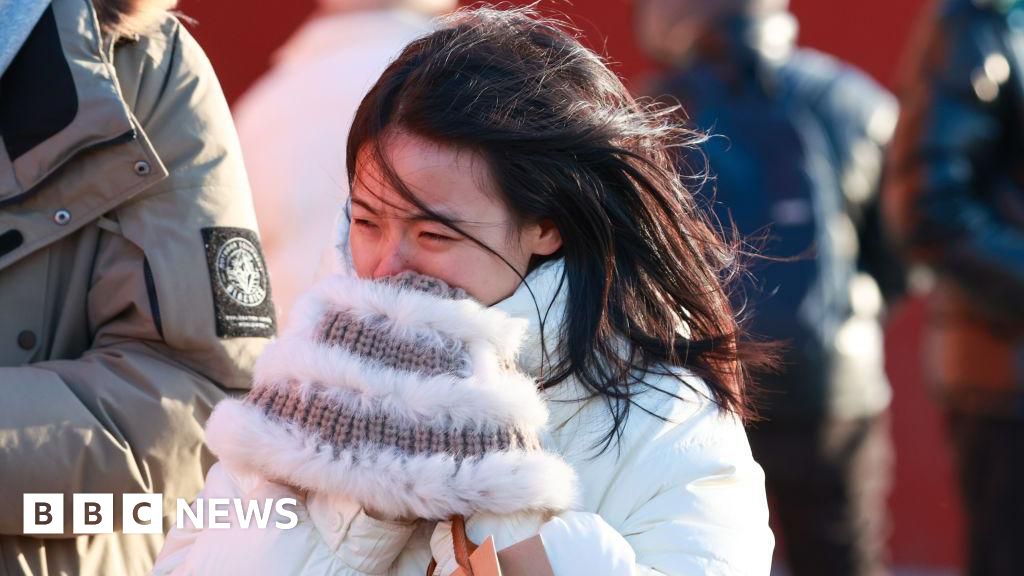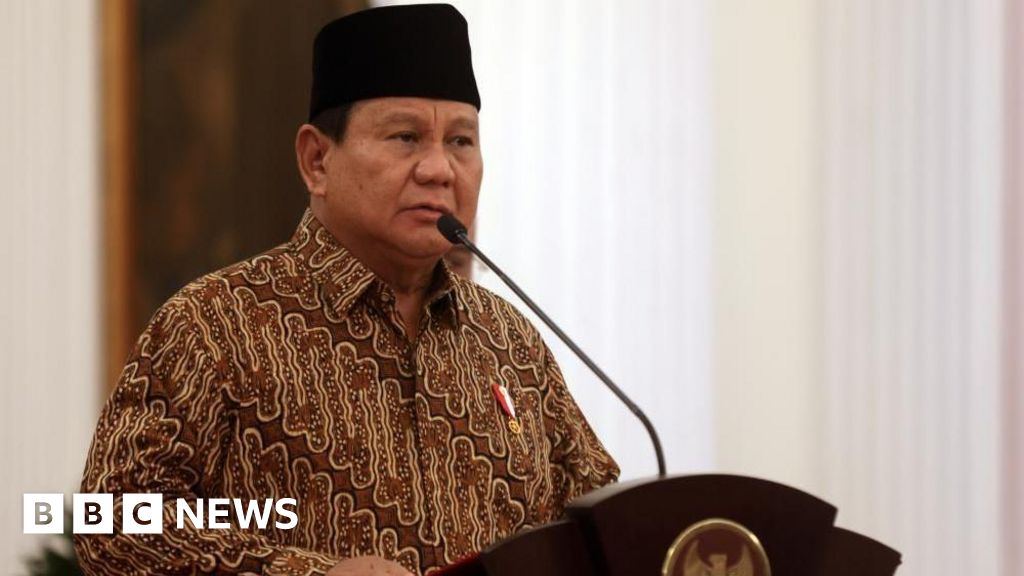On board Air Force One
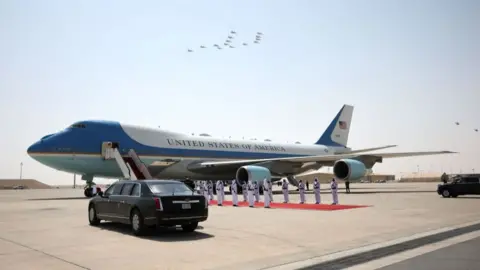 Getty Images
Getty ImagesMost journalists travelling with the US president don’t see much of the interior of Air Force One, the presidential jet.
The press cabin is in the back of the plane, accessible by a rear set of steps and a quick turn of a corner.
To reach the presidential suite at the front of the plane would require negotiating with the armed Secret Service agents in the next-door cabin.
On Donald Trump’s trip to the Middle East this week, when the future of the famous plane was a huge talking point, Fox News host Sean Hannity had priority seating and access to the president to conduct an in-flight interview.
But the rest of us in the travelling press pool were consigned to our small section of the plane.
It was a whirlwind trip, hitting three nations in three nights, half a world away. The president described it as an “endurance test” – one that his staff and those of us in the press pool had to manage, as well.
The presidential jet is not a bad way to fly, however. The 14 seats are comfortable, roughly on par with a first-class domestic flight.
There’s a bathroom and a table with snacks (including the coveted Air Force One-branded M&Ms bearing the president’s signature, which aren’t available anywhere else).
The cabin has a pair of television monitors – usually tuned to the president’s preferred cable news channel (CNN during Joe Biden’s term; Fox News for Trump). On occasion, they’ve been set to a football game or other sporting events.
For longer flights, the on-board kitchen serves plated meals (the president eats from a different, fancier menu). On short hops, there’s usually food in a takeaway bag.
But the interior of this famous aircraft could soon undergo a radical refit if, as looks likely, Trump accepts the Qatari offer to supply a new “palace in the sky” – the biggest foreign gift ever received by a US president.
Technically, “Air Force One” is a radio call sign, the designation for any Air Force aircraft with the US president aboard. The small prop plane Lyndon Baines Johnson took from Austin to his Texas ranch in the 1960s was Air Force One, too.
But the Air Force One most people picture, the one featured in the Harrison Ford action film, is the 747-200b with water blue, steel blue and white paint set against a chrome underbody – a colour scheme picked out by First Lady Jackie Kennedy in 1962.
Currently there are two of these 747s in the Air Force passenger fleet, in use since 1990. Needless to say, technology – both in aircraft design and everything else – has come a long way in the ensuing years. The planes have been upgraded, but the costs of maintaining the airframe and engines are growing. The aircrafts are showing their age.
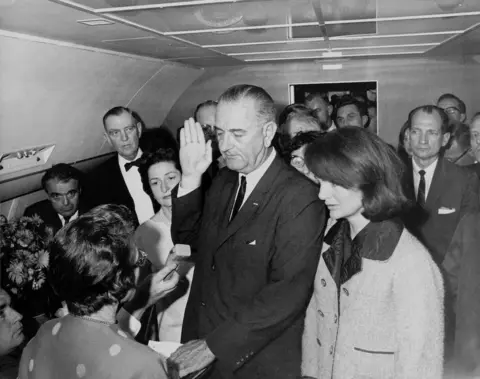 Getty Images
Getty ImagesThis has clearly irked the current White House occupant – the only president to own his own jet, or for that matter, his own airline, prior to taking office.
“I leave now and get onto a 42-year-old Boeing,” he said, exaggerating the plane’s age during an industry briefing on Thursday in Abu Dhabi. “But new ones are coming.”
Coming, but not soon enough for Trump. During his first term, he touted an updated presidential aircraft, made by Boeing, that was in the works. He even picked out his own colour palette, scrapping Kennedy’s design for a red-white-and-blue livery. He proudly displays a model of that jet in the Oval Office.
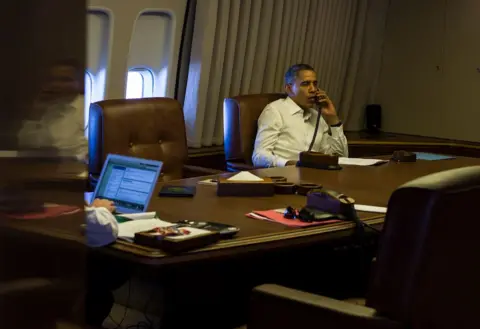 Getty Images
Getty ImagesOriginally planned to be delivered by 2021, delays and cost overruns for the estimated $4bn construction programme have made it less likely that the two new planes on order will be available for much, if any, of Trump’s second term in office, which expires in January 2029.
He has tasked tech multi-billionaire Elon Musk with speeding up the process and reportedly groused in private that he is embarrassed to travel in such an outdated plane.
That explains why the president has become enamoured with the prospect of a seemingly more immediate solution to his air transport woes – courtesy of the Persian Gulf nation of Qatar.
News of Qatar’s offer of a lavish $400m 747-8 made headlines last week, but the gift apparently has been in the works for months.
Trump surreptitiously visited the aircraft in question in mid-February, just a few weeks after the start of his second term in office.
Aside from the legal and ethical concerns of such a substantial gift – raised by critics and some allies of the president – converting a foreign 747 for use by an American president creates a number of technical challenges.
The aircraft would have to be made capable of in-flight refuelling and retrofitted with a sophisticated package of communications and security equipment. The current models have systems built to withstand the electromagnetic pulse of a nuclear explosion.

Such a refitting process, says aviation analyst Richard Aboulafia, managing director of AeroDynamic Advisory, would take years, until 2030 at least.
“They have to assume the jet has been left unattended in a dangerous place for 13 years,” he says. “Which means it’s not enough to take the plane apart. You also have to take every single component apart.”
The plane would need additional power to run its new systems, and its interior might have to be rearranged. Chances are there’s no press cabin in the flying palace as originally designed.
Mark Cancian, a senior adviser with the Center for Strategic and International Studies’ Defense and Security Department, says the costs of such retrofitting could easily run to $1bn.
He adds, however, that Trump could waive some, or all, of the security modifications if he so chooses.
“He’s the president,” he said.
When the Air Force ultimately does retire its current crop of 747s, it will put to pasture an aircraft that have been part of fabric of American history for decades. One that transported President Bill Clinton, along with former Presidents Jimmy Carter and George W Bush, to Israel for Yitzhak Rabin’s funeral in 1995.
After the 9/11 attack on the World Trade Center and Pentagon, George W Bush took to the skies in Air Force One and stayed aloft for hours, refuelling mid-air, until his security team determined it was safe for him to land and address the nation, before ultimately returning to Washington.
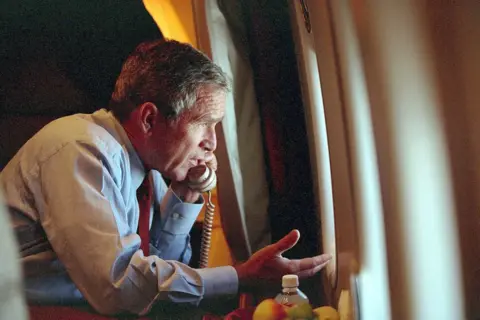 Getty Images
Getty ImagesSix US presidents have travelled on these jets, criss-crossing the US and visiting all corners of the globe. One took Biden to Israel just days after the 7 October attack by Hamas.
Trump has effectively employed the aircraft as a campaign device, holding political rallies at airfields and making low-speed passes over the crowds before landing and using Air Force One as a dramatic backdrop for his speeches.
On Trump’s recent Mid East trip, military fighters from Saudi Arabia, Qatar and the UAE accompanied Air Force One as it flew through their national airspace.
Aging though it may be, Air Force One is still one of the most recognisable signs of American presidential authority and power in the world – a military aircraft that serves a higher purpose.
“It’s not made for luxury,” says Aboulafia. “It’s a flying command post. You’re not there to throw parties.”
Additional reporting by Max Matza
